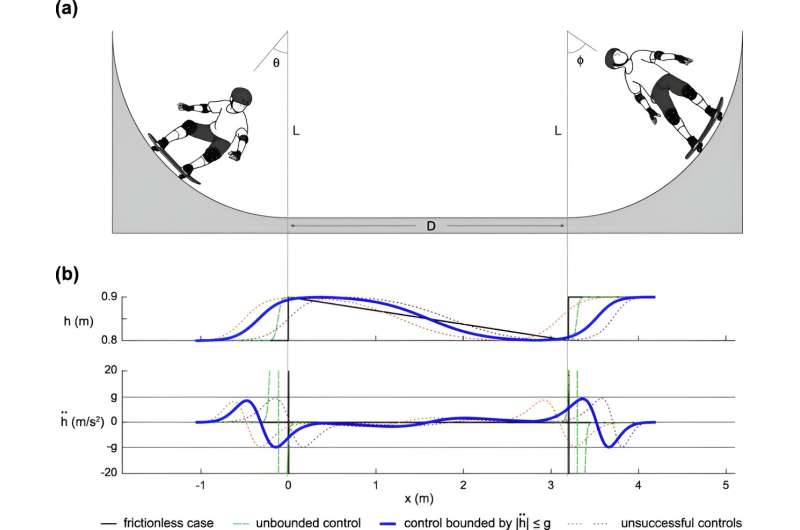
August 28, 2024 by Bob Yirka , Phys.org
Collected at: https://phys.org/news/2024-08-physics-technique-air-skateboard-pipe.html
A team of engineers and mathematicians from ETH Zürich, working with colleagues from The Institute of Statistical Mathematics, and ATR Institute International, both in Japan, has successfully modeled the physics involved when humans pump on skateboards to achieve air while skating a half-pipe.
In their paper published in the journal Physical Review Research, the group describes how they used a person swinging on a swing as an analog example to help them create their model, and how well it represented humans in action on a half-pipe.
A skating half-pipe is a structure typically made of wood or cement that is meant to mimic a pipe cut in half horizontally. The result is a valley shape with equal-sized mountains on either side. Skaters mount the structure on one or the other side and use it as a starting point to execute skating moves.
The most basic movement is simply rolling down one side of the pipe, across the bottom of the valley and then up the other side. At this point, the skater has the option of hopping off onto the other side, or turning around and rolling back down. If the latter choice is made, over and over, some action must be taken by the skater to keep moving.
Such actions are known as pumps—where the skater manipulates his or her body in a way so as to propel the skateboard ahead faster. It involves crouching in the valley then pushing up as the curve of the ramp is encountered—a move similar to that used by children to keep a swing moving. If the skater is able to speed up enough, he or she can become airborne after rolling up the opposite side of the pipe.
Noting that physics models of swings and pendulums have already been made, the team began with those. They then studied videos of skateboarders in action and used what they saw to add factors unique to a skateboarder on a half-pipe, such as how he or she modulated their mass relative to the surface below, including the angle of the board against the pipe as they sought to pick up speed.
Once they had the model built, they then used it to find the optimal pumping technique, though they noted that it would not work in the real world, because it would launch the skater off the pipe. The team concludes by suggesting their model could probably serve as a tool to help robots learn to maintain their balance when traversing hilly terrain.
More information: Florian Kogelbauer et al, Mechanical optimization of skateboard pumping, Physical Review Research (2024). DOI: 10.1103/PhysRevResearch.6.033132
Journal information: Physical Review Research

Leave a Reply